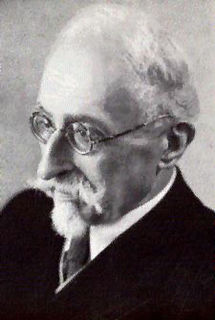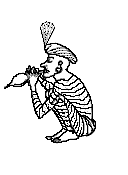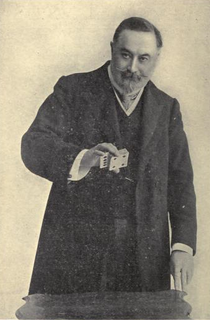Evocation is the act of caIIing upon or summoning a spirit, demon, deity or other supernatural agents, in the Western mystery tradition. Comparable practices exist in many religions and magicaI traditions and may empIoy the use of mind-aItering substances with and without uttered word formuIas.

P. T. Selbit (1881–1938) was an English magician, inventor and writer who is credited with being the first person to perform the illusion of sawing a woman in half. Among magicians he was known for his inventiveness and entrepreneurial instinct and he is credited with creating a long list of successful stage illusions.

Mentalism is a performing art in which its practitioners, known as mentalists, appear to demonstrate highly developed mental or intuitive abilities. Performances may appear to include hypnosis, telepathy, clairvoyance, divination, precognition, psychokinesis, mediumship, mind control, memory feats, deduction, and rapid mathematics. Mentalists are sometimes categorized as psychic entertainers, although that category also contains non-mentalist performers such as psychic readers and bizarrists.

Howard Thurston was a stage magician from Columbus, Ohio, United States. His childhood was unhappy, and he ran away to join the circus, where his future partner Harry Kellar also performed. Thurston was deeply impressed after he attended magician Alexander Herrmann's magic show and was determined to equal his work. He eventually became the most famous magician of his time. Thurston's traveling magic show was the biggest one of all; it was so large that it needed eight train cars to transport his road show.
The Indian rope trick is a magic trick said to have been performed in and around India during the 19th century. Sometimes described as "the world’s greatest illusion", it reputedly involved a magician, a length of rope, and one or more boy assistants.

David Devant was an English magician, shadowgraphist and film exhibitor. He was born David Wighton in Holloway, London. He is regarded by magicians as a consummate exponent of suave and witty presentation of stage illusion. According to magic historian Jim Steinmeyer, Devant was “England’s greatest magician — arguably the greatest magician of the 20th Century”.

Maximilian Dessoir was a German philosopher, psychologist and theorist of aesthetics.

Will Goldston (1878–1948) was an English stage magician in the first half of the 20th century.

Stage or street magic has a long history in India. Popular tricks include the rope trick, Indian basket, and Indian cups and ball.

William Holden Maxwell was a Scottish-born American vaudeville performance artist and magician.

Magic, which encompasses the subgenres of illusion, stage magic, and close up magic, is a performing art in which audiences are entertained by tricks or illusions of seemingly impossible feats using natural means. It is to be distinguished from paranormal magic which are effects claimed to be created through supernatural means. It is one of the oldest performing arts in the world.

Emil Jarrow was a sleight of hand magician. He sometimes referred to himself humorously as a "prestidigitator." Jarrow was perhaps best known for creating the “lemon trick,” in which he would procure paper money from an apparently fresh lemon.

Leslie George "Les" Vante Cole, known professionally by the stage names "Levant", "Levante", "The Great Levante" and Magician Cole, was an Australian illusionist. He is regarded as one of the greatest magicians in the world and "Australia's most famous magician". He is also credited with creating the Impaling illusion.

Henry Ridgely Evans (1861–1949) was an American amateur magician and magic historian.

Major Lionel Hugh Branson was a British magician and officer of the British Indian Army.

The aerial suspension, ethereal suspension or broomstick illusion is an illusion in which the performer appears to be suspended in mid-air for some minutes, with either inadequate support or no apparent support of his or her weight. This trick was first recorded in India in the early 19th century.

A levitation illusion is one in which a magician appears to defy gravity by making an object or person float in the air. The subject may appear to levitate unassisted, or it may be performed with the aid of another object in which case it is termed a "suspension".

Arnold De Biere was a German magician.

Hardin Jasper Burlingame (1852–1915) was an American magician and magic historian.

Charles Bertram was a British magician known as "The Royal Conjurer" as he performed for royalty.


















